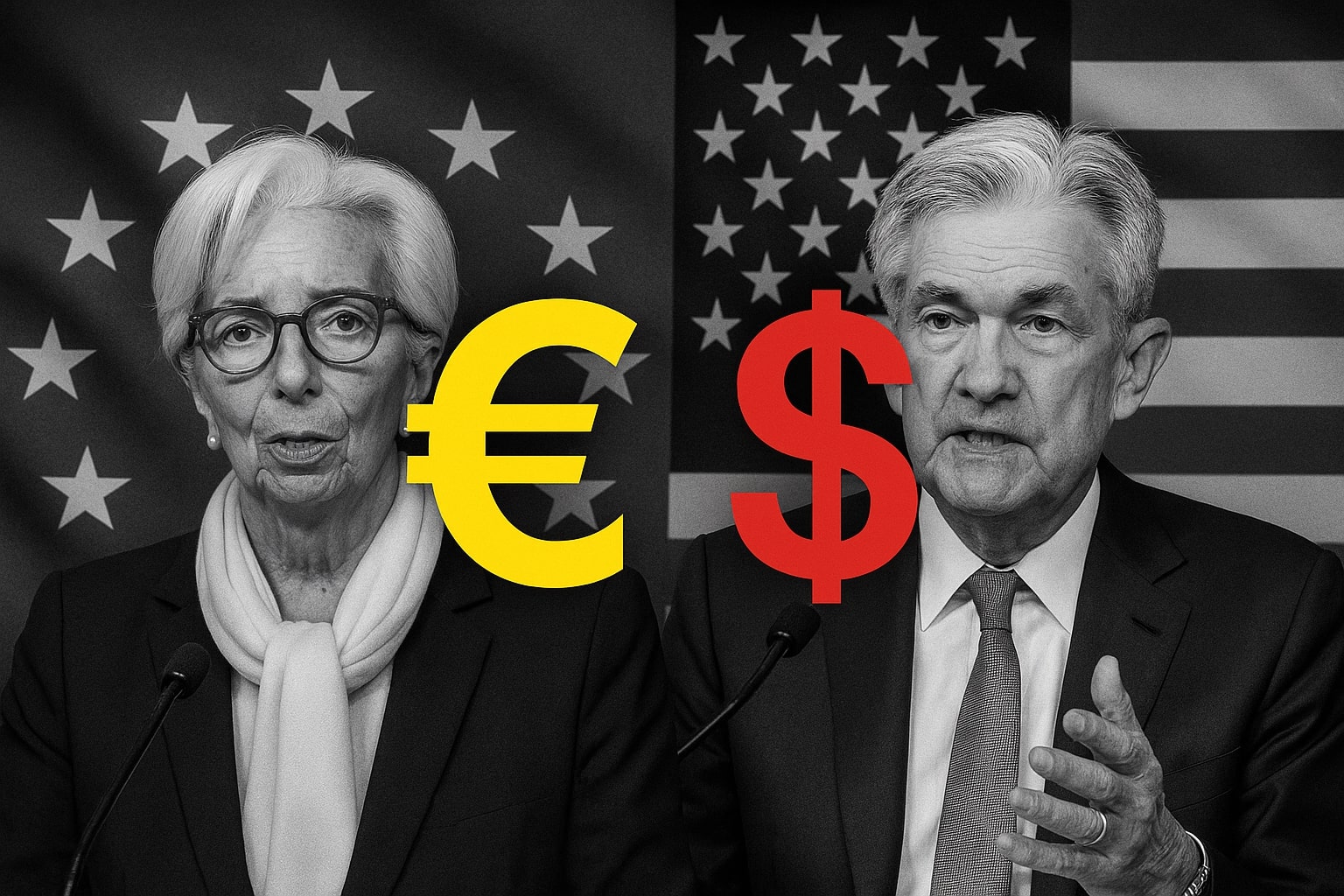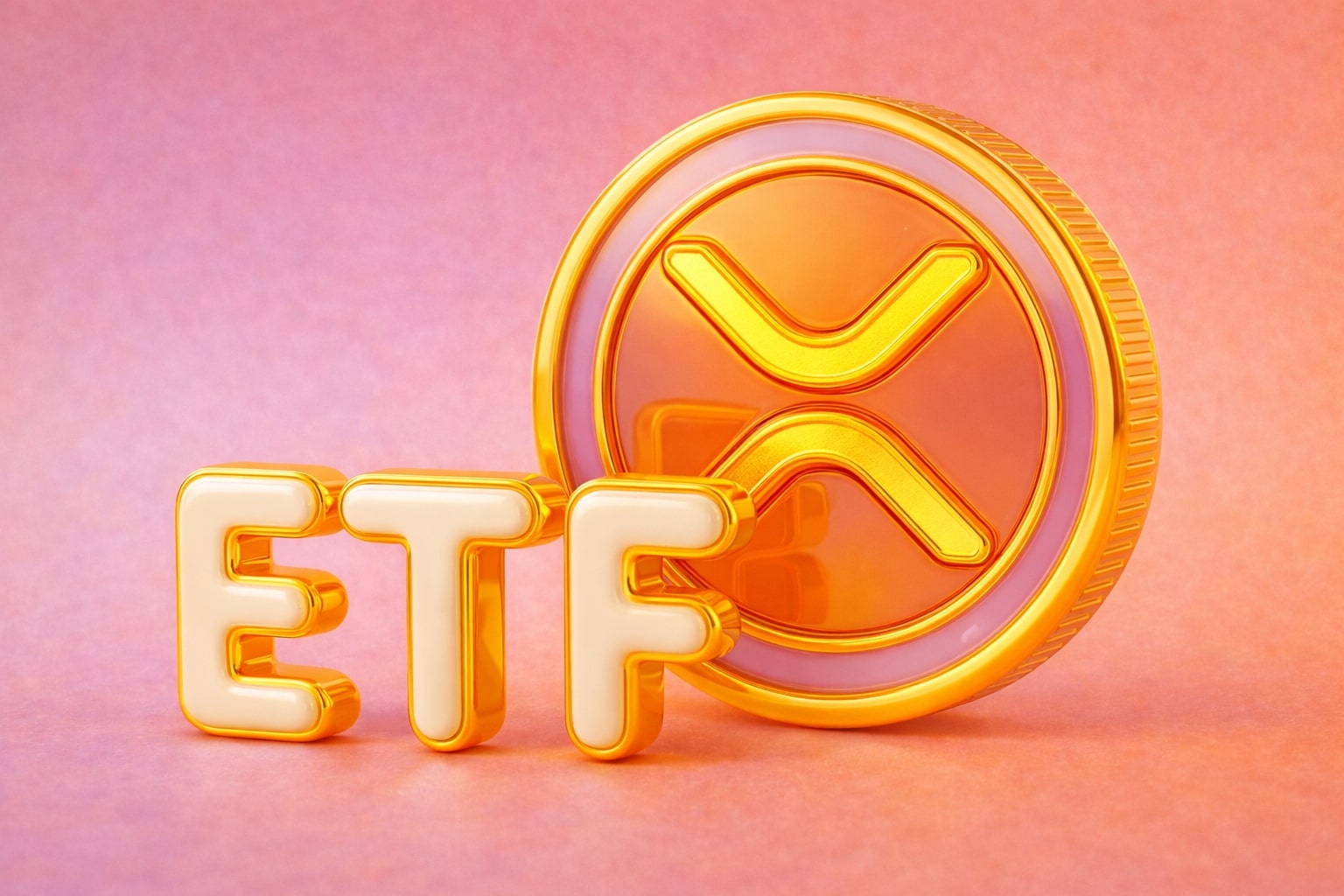
EUR/USD Price Forecast - Euro to Dollar Drops to 1.1500 as U.S. PMI Surge and Fed Signals Hit Euro Momentum
Euro weakens below 1.1550 after the U.S. Composite PMI jumps to 54.8, while the Eurozone’s manufacturing slips back into contraction | That's TradingNEWS
EUR/USD Slips Toward 1.1500 as Strong U.S. PMI Data and Soft Eurozone Momentum Pressure the Euro
The EUR/USD pair is trading near 1.1500, retreating for the first time in three weeks as stronger-than-expected U.S. business data reinforces dollar strength and exposes the euro’s structural weakness. Friday’s price action marks a clear pivot: the U.S. Dollar Index (DXY) remains anchored near 100.26, its highest level in over five months, while Eurozone indicators show uneven momentum despite headline resilience. Traders are rotating toward the dollar amid shifting central-bank expectations and widening growth differentials across the Atlantic.
U.S. PMI Strength Shifts Momentum Toward the Dollar
The S&P Global U.S. Composite PMI rose to 54.8 in November, up from 54.6, its highest reading in four months. Services surged to 55.0, beating expectations, while manufacturing slipped modestly to 51.9, still showing expansion. The data confirm robust private-sector output, supported by the fastest increase in new orders this year. Price pressures, however, have re-emerged: input costs accelerated at one of the fastest rates in three years, indicating that inflation persistence remains a concern for the Federal Reserve.
The University of Michigan Consumer Sentiment Index improved to 51.0, up from 50.5, while one-year inflation expectations dropped to 4.5% and the five-year gauge softened to 3.4%. Together, the figures point to a steady consumer backdrop—strong enough to keep U.S. demand stable but soft enough to justify gradual easing in 2026.
Fed Signals Keep Traders Guessing as Rate-Cut Odds Swing
Comments from New York Fed President John Williams reshaped the narrative mid-session. Williams noted that inflation progress has “stalled” but confirmed a December rate cut remains possible, citing signs of cooling in labor and output. The market reaction was immediate: the CME FedWatch Tool repriced the probability of a 25-basis-point cut at 74%, up sharply from 31% earlier in the day. Nonetheless, Fed officials remain divided—Philadelphia Fed President Anna Paulson and Cleveland Fed’s Beth Hammack emphasized patience, arguing policy should stay restrictive until wage pressures ease. This policy tension has kept the DXY elevated around 100.00–100.50, capping any meaningful rebound in EUR/USD.
Eurozone Business Activity Holds but Momentum Weakens
In contrast, Eurozone data suggest a modest but fragile recovery. The HCOB Composite PMI eased slightly to 52.4 from 52.5, signaling the eleventh straight month of expansion yet showing slower growth than expected. The Services PMI rose to 53.1, an 18-month high, while Manufacturing PMI fell back into contraction at 49.7. Germany, the region’s industrial anchor, posted a decline in composite activity to 52.1 from 53.9, while France improved to 49.9 as its services sector regained momentum.
The euro’s resilience now depends on how the European Central Bank (ECB) interprets these mixed signals. The ECB’s third-quarter negotiated wage data printed at 1.87% year-on-year, below expectations of 2.45%, implying subdued income growth and weak domestic demand heading into 2026. The ECB’s composite policy stance therefore remains neutral, with swaps pricing only a 40% chance of one additional 25-basis-point cut within the next twelve months, compared with 84 bps of easing expected from the Fed over the same period.
ECB Policy Pause Meets Fed’s Uncertainty
The diverging central-bank trajectories continue to shape the medium-term outlook for EUR/USD. Analysts increasingly see the ECB at the end of its easing cycle, while the Fed retains room to cut. This relative policy divergence favors the dollar, especially with the U.S. 10-year Treasury yield holding near 4.05%, compared with the German Bund’s 2.32%. Even as Christine Lagarde emphasized Europe’s investment potential at her Frankfurt address, her silence on monetary policy signaled strategic caution rather than renewed stimulus.
Technical Picture: Key Battle Around 1.1500
The pair trades inside a tightening range between 1.1450 (key pivot) and 1.1585 (first resistance). Technical momentum favors sellers: EUR/USD remains below both the 20- and 50-day exponential moving averages, confirming downward bias. The RSI is stabilizing near 44, indicating limited downside exhaustion but no sign of reversal. A sustained close below 1.1450 would open the way to 1.1405, aligned with the 200-day moving average. Conversely, regaining 1.1585–1.1650 would be the first confirmation that buyers have regained control.
On the 4-hour chart, repeated failures near 1.1565 reflect lack of conviction among euro buyers, while support at 1.1500 remains the final defense before a possible slide toward 1.1400. The DXY’s inability to break 100.84 could offer temporary relief, but structural pressure remains downward for the pair.
Read More
-
IVE ETF Near $212: Is This S&P 500 Value Play Still Cheap for 2026?
20.12.2025 · TradingNEWS ArchiveStocks
-
XRP ETFs XRPI at $11.07 and XRPR at $15.76 Power $1.2B Inflows as XRP Fights for $2
20.12.2025 · TradingNEWS ArchiveCrypto
-
Natural Gas Price Forecast: NG=F Tests $3.60 Support as LNG Boom and $5 Henry Hub Calls Build Into 2026
20.12.2025 · TradingNEWS ArchiveCommodities
-
USD/JPY Price Forecast - Pairs Surges After BoJ’s 0.75% Hike as Pair Eyes 161.50 Resistance
20.12.2025 · TradingNEWS ArchiveForex
Macro Context and Sentiment
The macro divergence between the U.S. and Europe continues to widen. U.S. activity data remain above the long-term average, while the eurozone faces cost inflation without wage momentum. Rising input costs—especially in manufacturing—combined with sluggish export demand have capped corporate margins across the bloc. With input prices rising at the fastest pace since March and output inflation falling to a one-year low, firms are unable to pass costs to consumers. Business sentiment has improved marginally but remains below pre-2024 levels.
Market Positioning and Institutional View
Positioning data show speculative traders reducing net euro longs by 16% week-on-week, while U.S. dollar positioning turned net long for the first time since July. Asset managers remain defensive on Europe, citing persistent underperformance in Germany’s industrial orders and structural energy cost disadvantage. Central-bank flows also favor the dollar: reserve rebalancing has leaned toward U.S. Treasuries as global funds seek yield and liquidity amid geopolitical uncertainty.
Outlook and Verdict for EUR/USD
The EUR/USD pair trades at 1.1500, facing its most critical technical test since early October. The near-term bias remains bearish, with downside risk extending toward 1.1450–1.1405 if U.S. data continue to outperform. However, the euro’s downside may moderate in December should the Fed confirm a rate cut—an event that could temporarily lift the pair back toward 1.1600–1.1650.
Verdict:
-
Short-Term (1 Month): Sell → Target 1.1450
-
Medium-Term (3–6 Months): Hold → Range 1.1400–1.1650
-
Long-Term (12 Months): Buy → Target 1.1800, conditional on ECB stability and Fed easing through 2026
The market is once again polarized between divergent policy signals. For now, EUR/USD sits at the mercy of macro asymmetry: a firm U.S. economy, resilient dollar, and an uneven European recovery. Only a decisive policy pivot from the Fed—or a surprise upswing in Eurozone manufacturing—can reverse the current bearish trajectory.



















